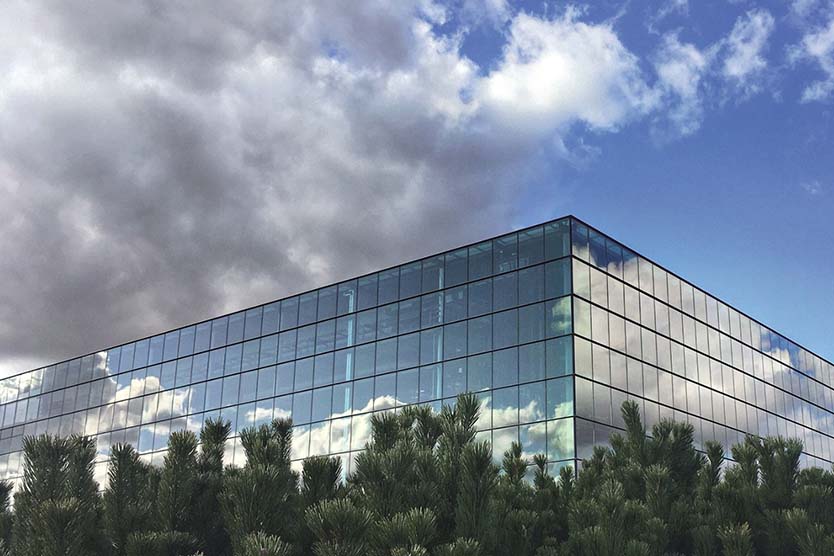
Researchers have developed transparent coatings for windows and glass façades that use thin film electrochromic and thermochromic materials.
© Fraunhofer
The EU is working towards making all buildings carbon-neutral by 2050. But it’s no easy task: The building sector accounts for 30 percent of all CO2 produced in Germany and 35 percent of total energy consumption. The air conditioning systems used in modern office blocks with glass facades are particularly polluting and require vast amounts of energy to run.
In the Switch2Save project, scientists from the Fraunhofer Institute for Silicate Research (ISC) in Würzburg and the Fraunhofer Institute for Organic Electronics, Electron Beam and Plasma Technology (FEP) in Dresden got together to find a solution. Researchers have developed transparent coatings for windows and glass façades that use thin film electrochromic and thermochromic materials.
Dr Marco Schott, who heads up the project at ISC, explains how both solutions work: “The electrochromic coating is applied to a transparent, conductive film which can then be ‘switched on’. Applying an electrical voltage triggers the transfer of ions and electrons, which darkens the coating and tints the window,” he says in a press release. “On the other hand, thermochromic coating works passively. When a certain ambient temperature is reached, it reflects the heat radiation of sun.”
Electrochromic applications are ideal for buildings with large, glazed surface areas. Only a very low voltage is needed to initiate the tinting process and they can be used in combination with electrothermic systems. Furthermore, they can be printed using a roll-to-roll process and have the potential to be retrofitted.
Six countries are participating in the trial, which is funded by the EU. A paediatric unit in a hospital in Athens, Greece, and an office building in Uppsala, Sweden, will be the first to apply the smart windows. The Fraunhofer FEP has estimated that smart glass can reduce the heating and cooling demands of modern buildings by up to 70 percent.


